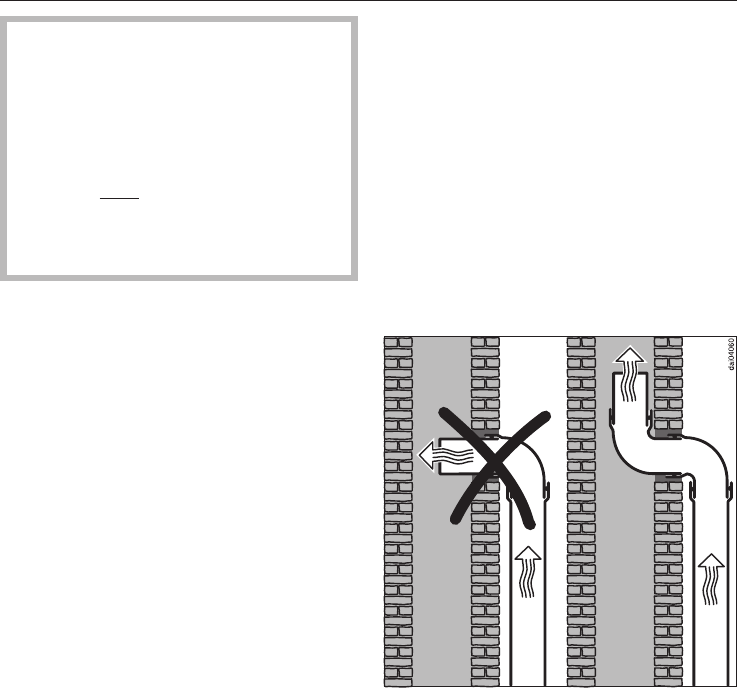
Danger of toxic fumes.
Gas cooking appliances release
carbon monoxide that can be harm
-
ful or fatal if inhaled. The exhaust
gases extracted by the hood
should be vented outside of the
building only
.
Do not terminate the exhaust
ducts in attics, garages,
crawlspaces, etc.
Please read and follow the "Warning
and Safety Instructions" to reduce the
risk of personal injury. Follow all local
building codes when installing the
hood.
Exhaust ducting and connections
– The ducting should be as short and
straight as possible, and the number
of sharp bends should be minimized.
– For most efficient air extraction, the
diameter of the ductwork should not
be less than 6" (150 mm). Use of flat
ducts also reduces the air extraction
efficiency.
–
Noise levels of the hood will increase
if flat ducts or round ducts of less
than 6" (150 mm) in diameter are
used.
WARNING
To reduce the risk of fire, only use
metal ductwork.
CAUTION
To reduce risk of fire and to properly
exhaust air, be sure to duct air out
-
side. Do not vent exhaust air into
spaces within walls or ceilings or
into attics, crawl spaces, or garages.
–
Use smooth or flexible pipes made
from approved non-flammable mate
-
rials for exhaust ducting.
–
Where the ductwork is horizontal, it
must slope away from the hood at
least
1
/
8
" per foot (1cm per meter) to
prevent condensation dripping into
the appliance.
–
If the exhaust is ducted through an
outside wall, a Miele Telescopic Wall
Vent can be used.
–
If the exhaust is ducted into an inac
-
tive flue, the air must be expelled
parallel to the flow direction of the
flue.
Air extraction
30


















